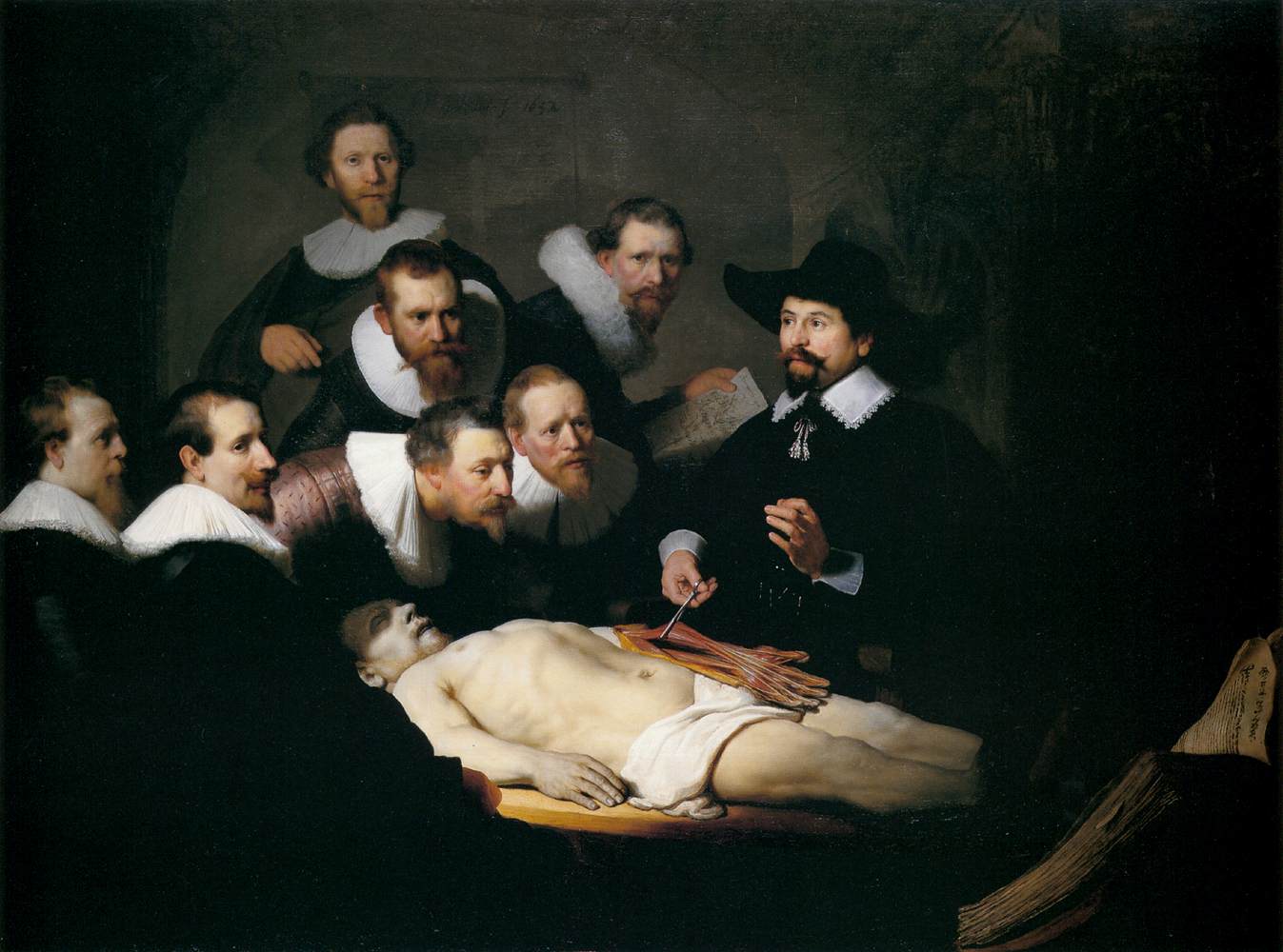
The Anatomy Lesson of Dr. Nicolaes Tulp is a 1632 oil painting by Rembrandt.
Dr. Nicolaes Tulp is pictured explaining the musculature of the arm to medical professionals

The Anatomy Lesson of Dr. Nicolaes Tulp is a 1632 oil painting by Rembrandt.
Dr. Nicolaes Tulp is pictured explaining the musculature of the arm to medical professionals